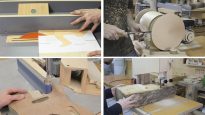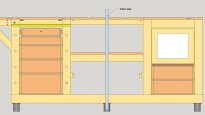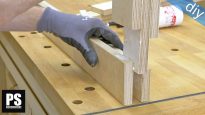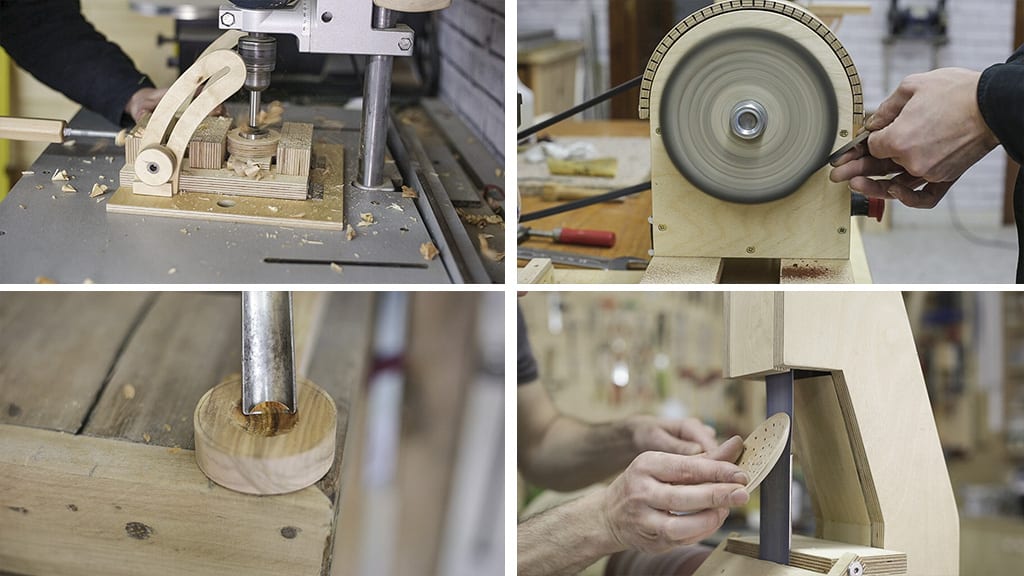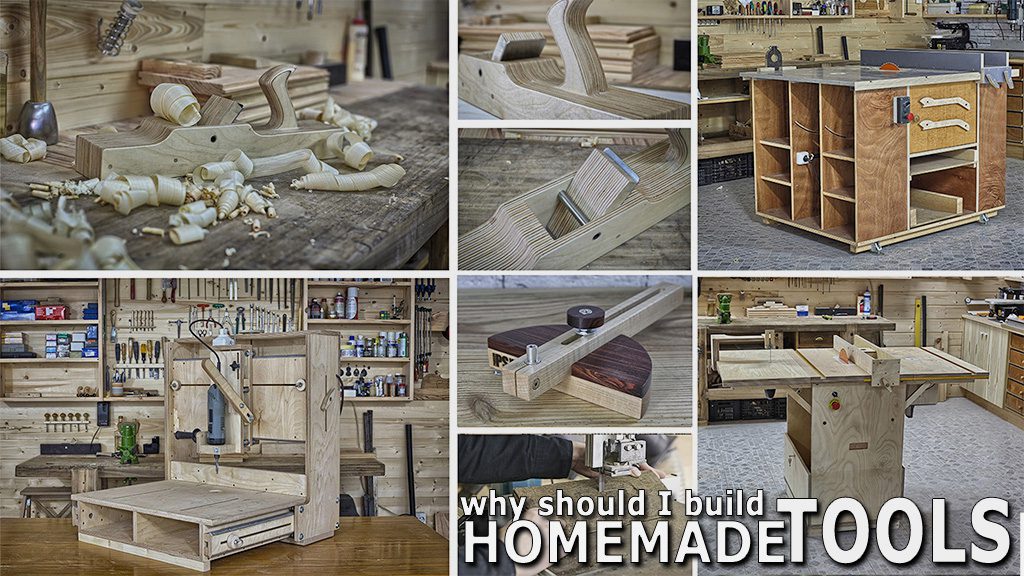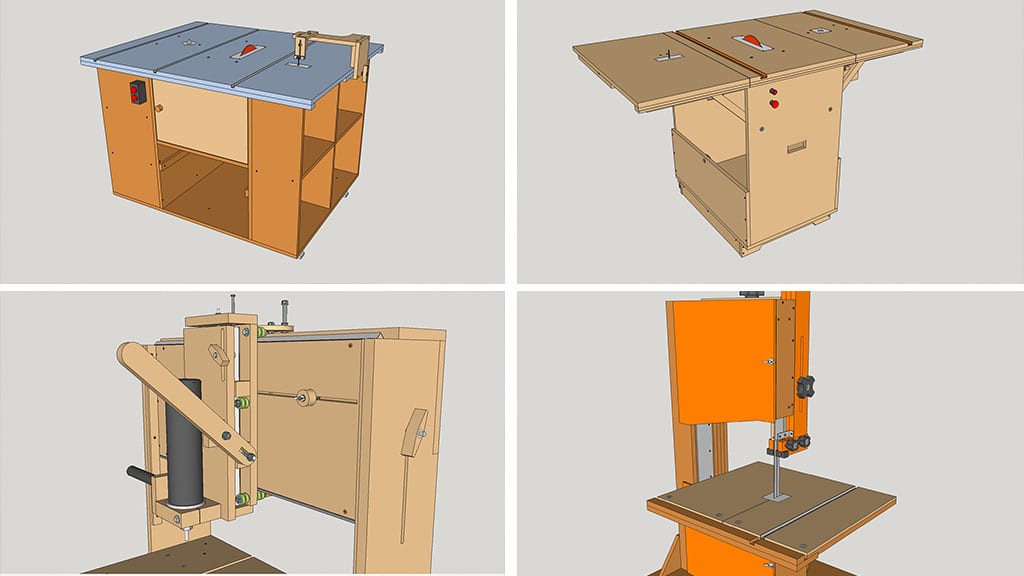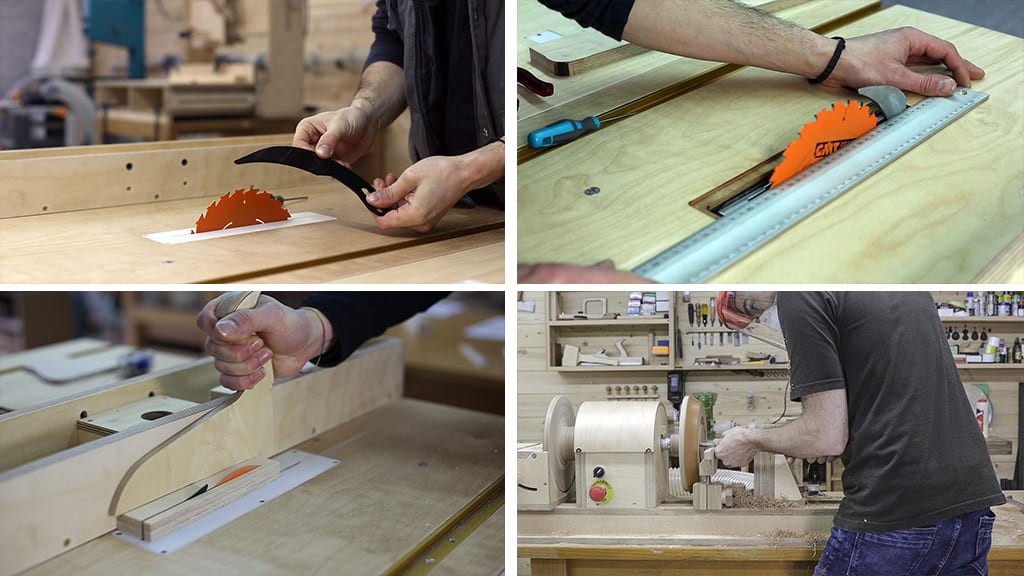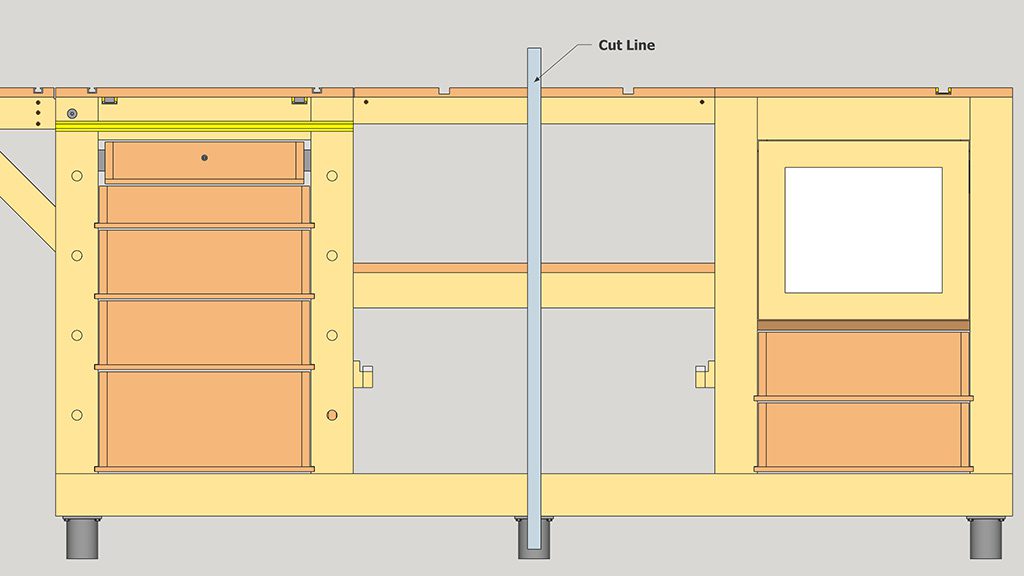This may vary depending on where you live. First of all, some materials or types of wood might be hard to come by.
The climate is also a factor. In reality, you can use virtually any kind of board to build these designs although certain materials will obviously produce more stable and longer-lasting tools and furniture.


If you’re going to use a different material it’s better to use one of the same thickness. This way the measurements of all the parts will the same as in the plans. If you go for a different thickness, you’ll likely have to alter the measurements of some other parts to make up for the change.
You can recalculate the dimensions by modifying the 3D SketchUp model included in my plans. However, this may prove difficult if you’re not familiar with the program.
If you live in a very humid region and your house or workshop aren’t well insulated, it’s a good idea to use marine plywood. For certain parts, particularly load-bearing parts, it’s best to use hard plywood, but typically there aren’t many parts of this type.
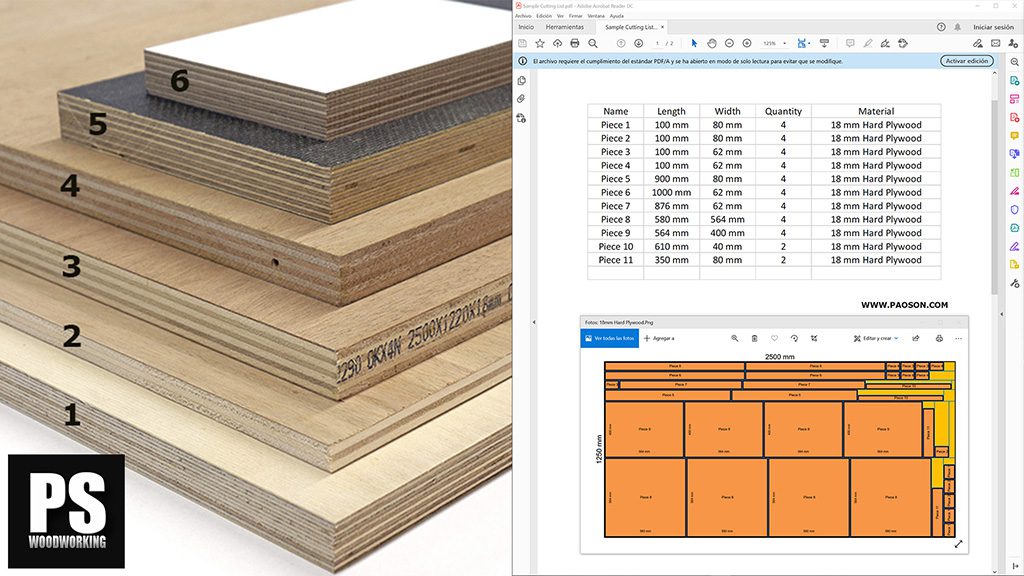

Using plywood has many advantages. We’ll need fewer tools than when using solid wood, work time is reduced, and replacing damaged parts is quite easy.
It’s possible to buy plywood online but shipping this kind of material can be very expensive due to its size and weight. It’s best to buy it from local superstores or carpentry shops.
If you want to compare plywood prices, find the contact details of local carpentry shops on the internet or on a phone book. Call them and see who can give you a better deal and whether they will deliver to your workshop. Sometimes they’ll agree to do it if they make frequent deliveries in you area.
If the carpentry shops won’t sell you plywood, ask them who their supplier is. The department stores that supply these shops might give you a better price. When you ask for a quote, keep in mind that there are several board qualities. You don’t need to use the best type but don’t let them rip you off.
Here you will find a very complete article about woodworking boards and materials that I use in my projects.
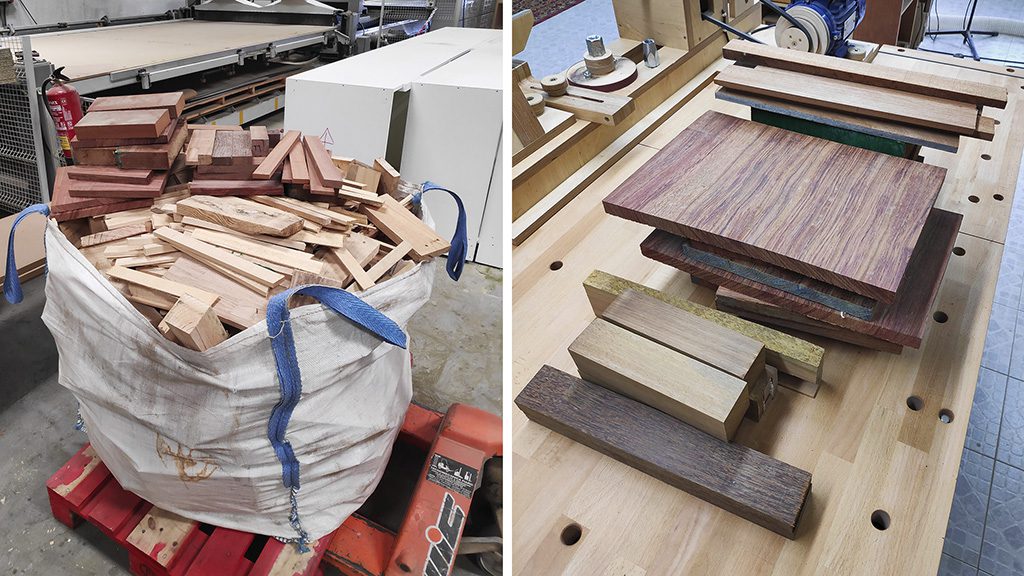

Some of the boards and materials that I use in my projects are hard to obtain, more so if we’re talking about small pieces such is the case with HPL panel.
Every once in a while I visit industrial estates and, after seeking permission, I check the waste skips of factories that do large carpentry projects. I almost always find pieces of board that I can use in my small projects.
You can see them in the picture above. This time, I’ll find large pieces of fairly expensive woods such as sucupira, teak or oak. These pieces are sent directly to board manufacturers which, after turning them into splinters, reuse them by making woodworking boards.
The choice of materials is also very important from an ecological standpoint. When it comes to woodworking, birch plywood is an environmentally sustainable choice. This species is quite abundant and grows rapidly.
What’s more, plywood manufacturers repopulate birch forests as they cut the trees down. Besides, we will produce less wood waste than if we were to use solid timber.


You should do the same before purchasing the rest of the materials, such as screws, accessories or electrical components.
Ask for the prices in several hardware stores. You can print the example with pictures of screws included in my plans so that they can see what you need more easily.
Since these parts are small, you can also look up prices in online stores. In this section of the forum you can find links to many of the required fasteners and materials.
Next article in the series:
6- Safety, estimating and organizing work time in woodworking
